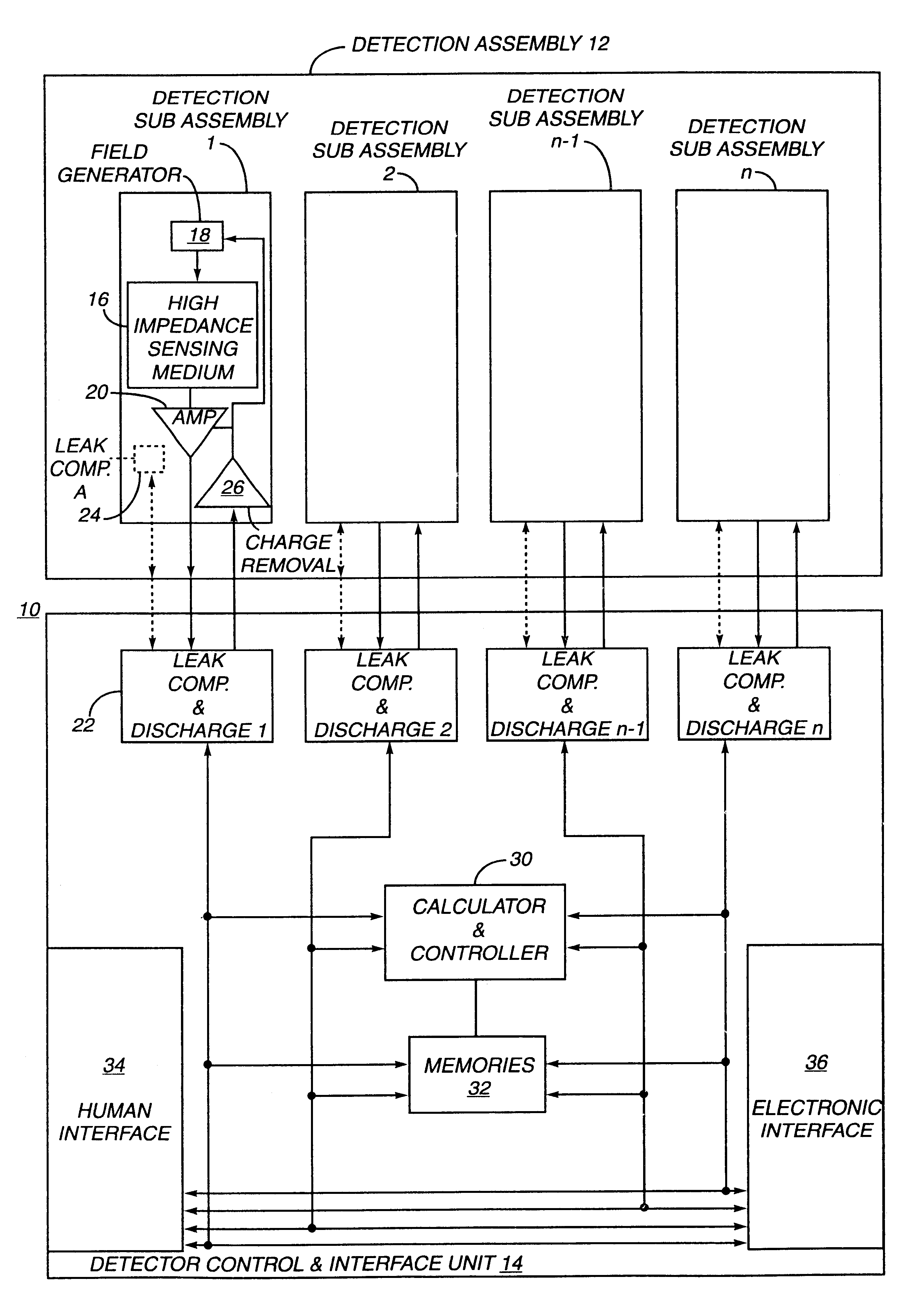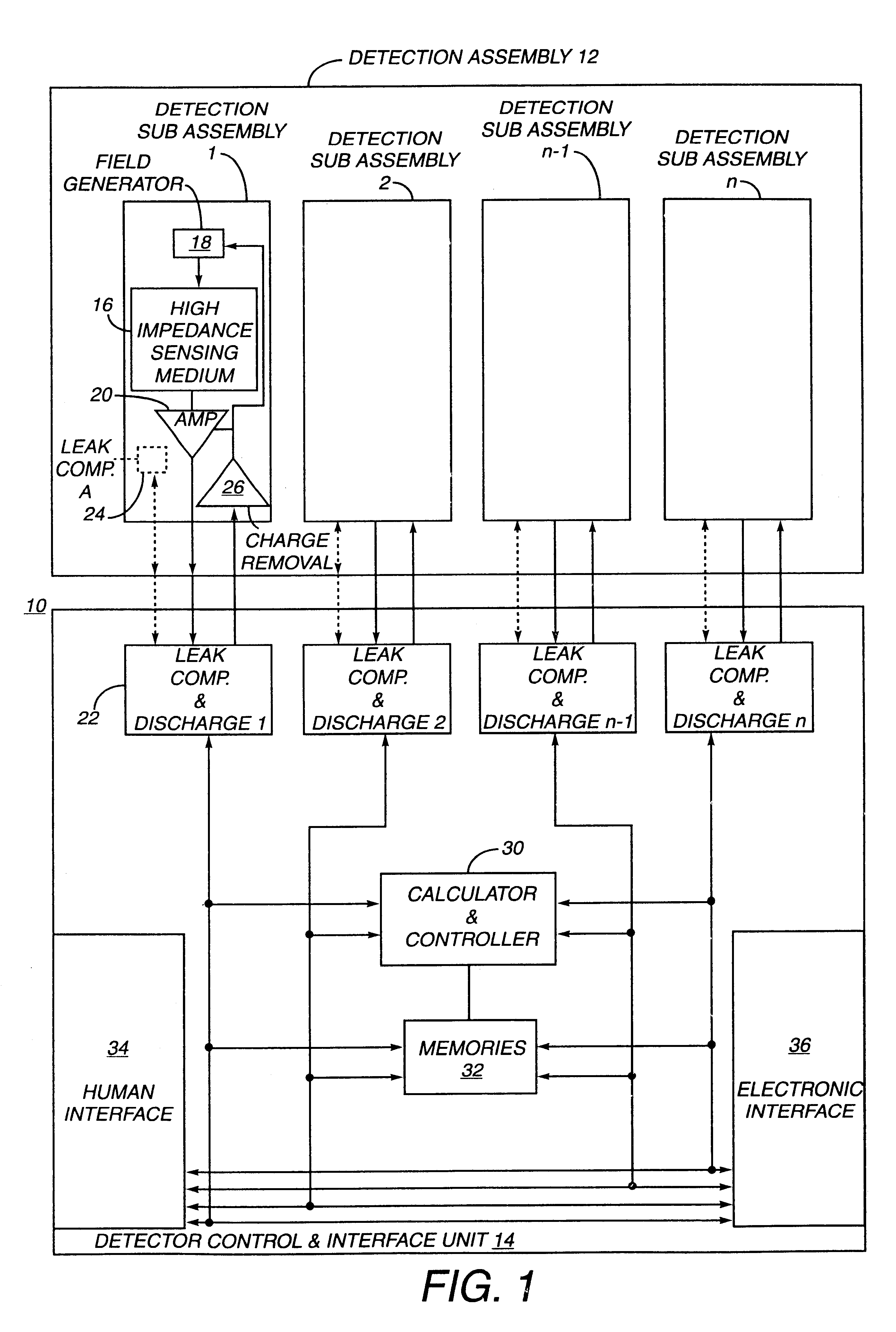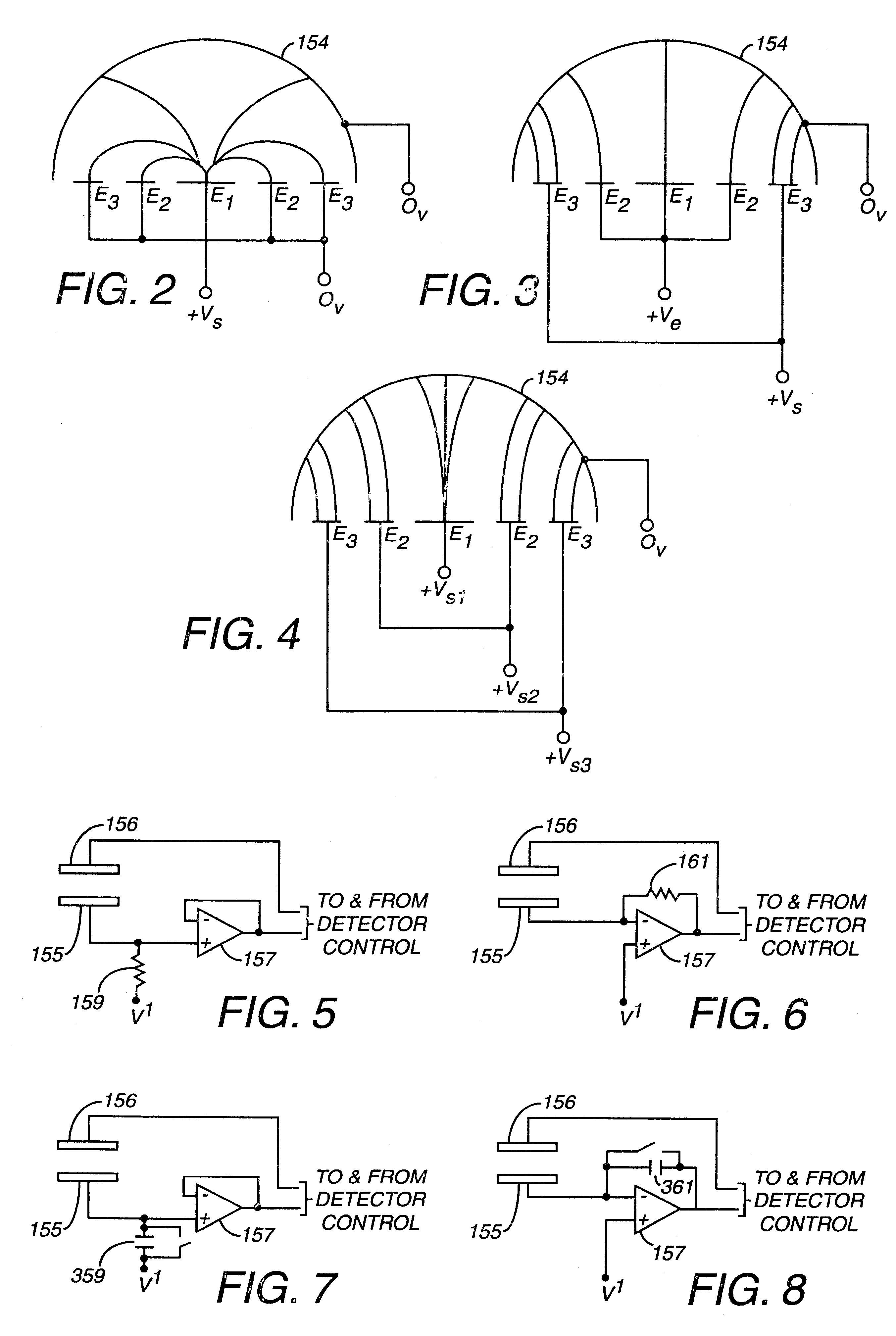Electronic circuit
a technology of electronic circuits and circuits, applied in the field of electronic circuits, can solve the problems of direct hazard to people, sensitivity, linearity, size, dynamic range, operating voltage, etc., and achieve the effects of improving the performance of sensors, improving the detection range, dynamic range, frequency range, and/or linearity
- Summary
- Abstract
- Description
- Claims
- Application Information
AI Technical Summary
Benefits of technology
Problems solved by technology
Method used
Image
Examples
Embodiment Construction
The following description incorporates the disclosures of U.S. Pat. Nos. 4,769,547; 4,804,847 and 4,970,391 by reference, as if fully set forth herein.
A sensing medium detects some characteristic of a physical phenomena to be measured. In the embodiment shown in FIGS. 1-10 of incorporated U.S. Pat. Nos. 4,769,547, 4,804,847 and 4,970,391, the sensing medium is configured as a radiation detector to measure the radiation level and / or dose rate of ionizing radiation incident upon an ion chamber 16 located atop an integrated circuit (IC) having a collecting or sensing electrode 155 or 170 in direct contact with the gas. In other embodiments, a variety of sensing media (including high impedance sensing media) that produce a signal by either charge or current production or induction in response to some physical phenomena occurring within the sensing media can be used with the circuitry of the present invention. These sensing media include piezoelectric, photoelectric or liquid electrochem...
PUM
 Login to View More
Login to View More Abstract
Description
Claims
Application Information
 Login to View More
Login to View More - R&D
- Intellectual Property
- Life Sciences
- Materials
- Tech Scout
- Unparalleled Data Quality
- Higher Quality Content
- 60% Fewer Hallucinations
Browse by: Latest US Patents, China's latest patents, Technical Efficacy Thesaurus, Application Domain, Technology Topic, Popular Technical Reports.
© 2025 PatSnap. All rights reserved.Legal|Privacy policy|Modern Slavery Act Transparency Statement|Sitemap|About US| Contact US: help@patsnap.com



